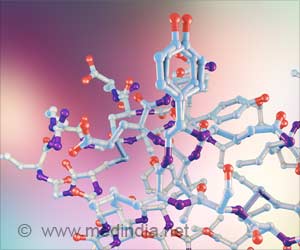Biology, by nature has a yin and a yang, or better known as a push and a pull, says Yaoying Ma, and adds that addiction, particularly relapse, is no exception.

This paper is the first to establish the existence of a brain circuitry that resists a relapse of cocaine use through a naturally occurring neural remodeling with "silent synapses."
The work is a follow-up on a recent study conducted by Dong and his colleagues, which was published in Nature Neuroscience last November. The team used rat models to examine the effects of cocaine self-administration and withdrawal on nerve cells in the nucleus accumbens, a small region in the brain that is commonly associated with reward, emotion, motivation, and addiction. Specifically, they investigated the roles of synapses—the structures at the ends of nerve cells that relay signals.
The team reported in its Nature Neuroscience study that when a rat uses cocaine, some immature synapses are generated, which are called "silent synapses" because they are semifunctional and send few signals under normal physiological conditions. After that rat stops using cocaine, these "silent synapses" go through a maturation phase and acquire their full function to send signals. Once they can send signals, the synapses will send craving signals for cocaine if the rat is exposed to cues previously associated with the drug.
The current Neuron paper shows that there's another side of "silent synapse" remodeling. Silent synapses that are generated in a specific cortical projection to the nucleus accumbens by cocaine exposure become "unsilenced" after cocaine withdrawal, resulting in a profound remodeling of this cortical projection. Additional experiments show that silent synapse-based remodeling of this cortical projection decreases cocaine craving. Importantly, this anti-relapse circuitry remodeling is induced by cocaine exposure itself, suggesting that our body has its own way to fight addiction.
Dong, the paper's senior author, says that the pro-relapse response is predominant after cocaine exposure. But since the anti-relapse response exists inside the brain, it could possibly be clinically tweaked to achieve therapeutic benefits.
Advertisement
"The story won't stop here," Ma adds. "Our ongoing study is exploring some unusual but simple ways to beef up the endogenous anti-relapse mechanism."
Advertisement
Source-Eurekalert











